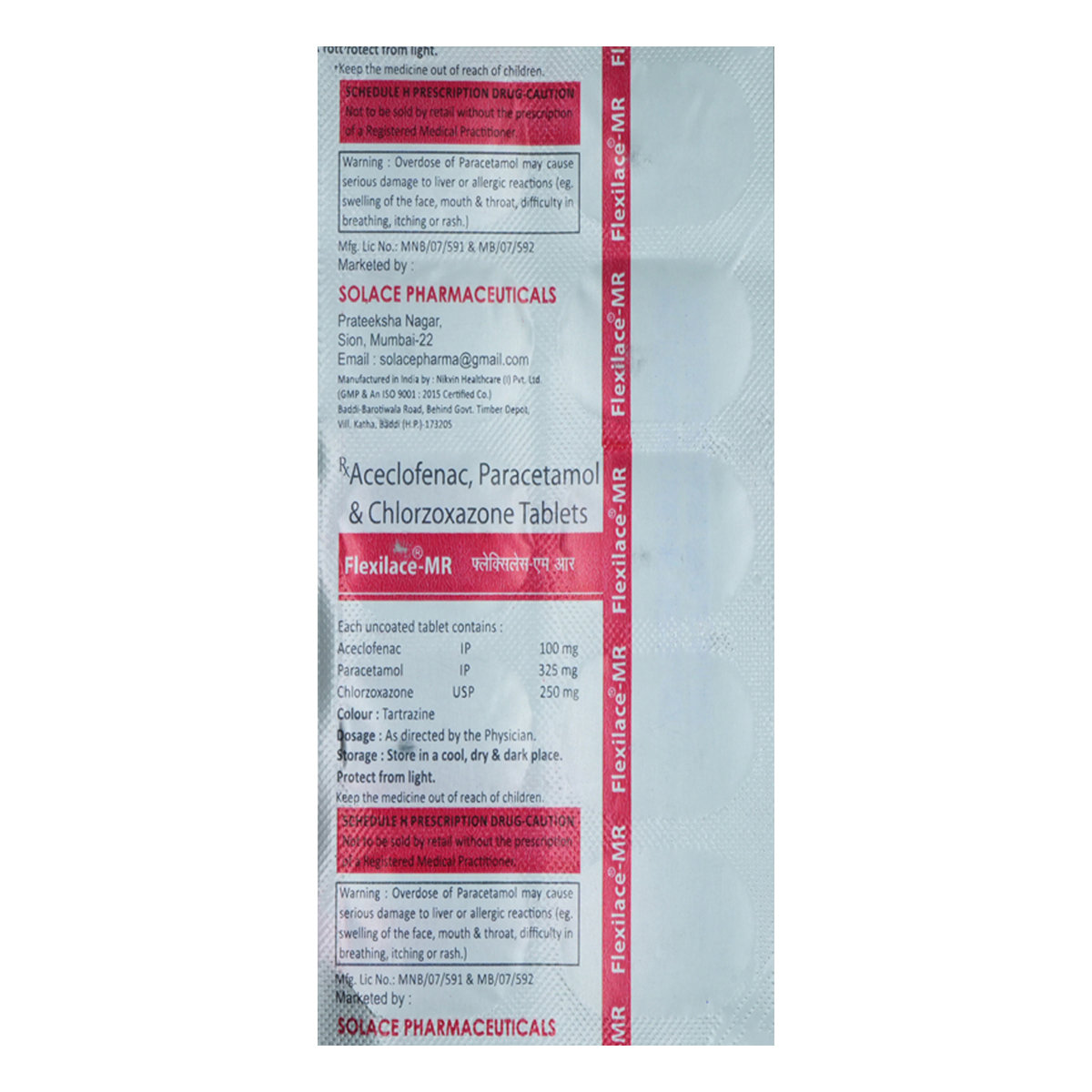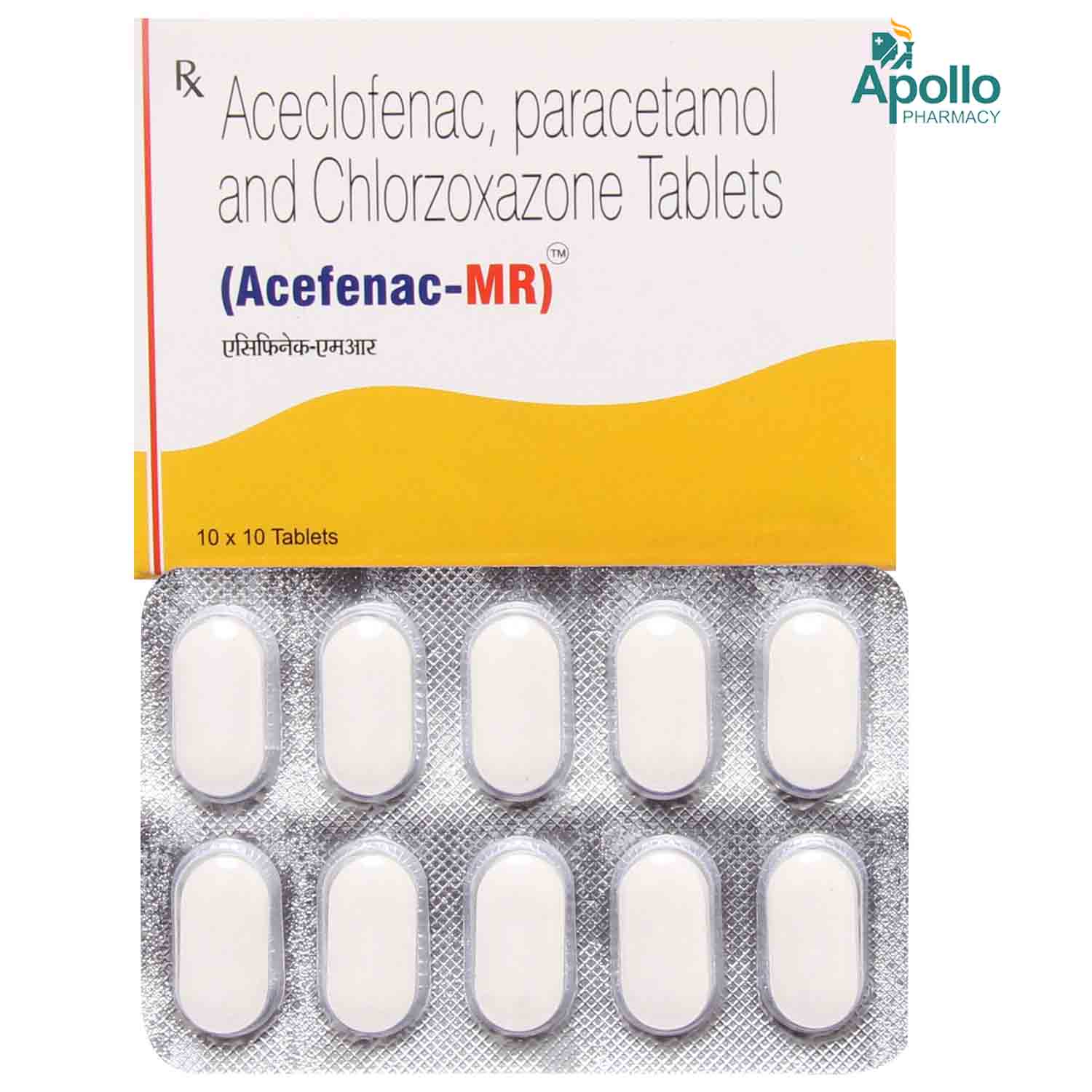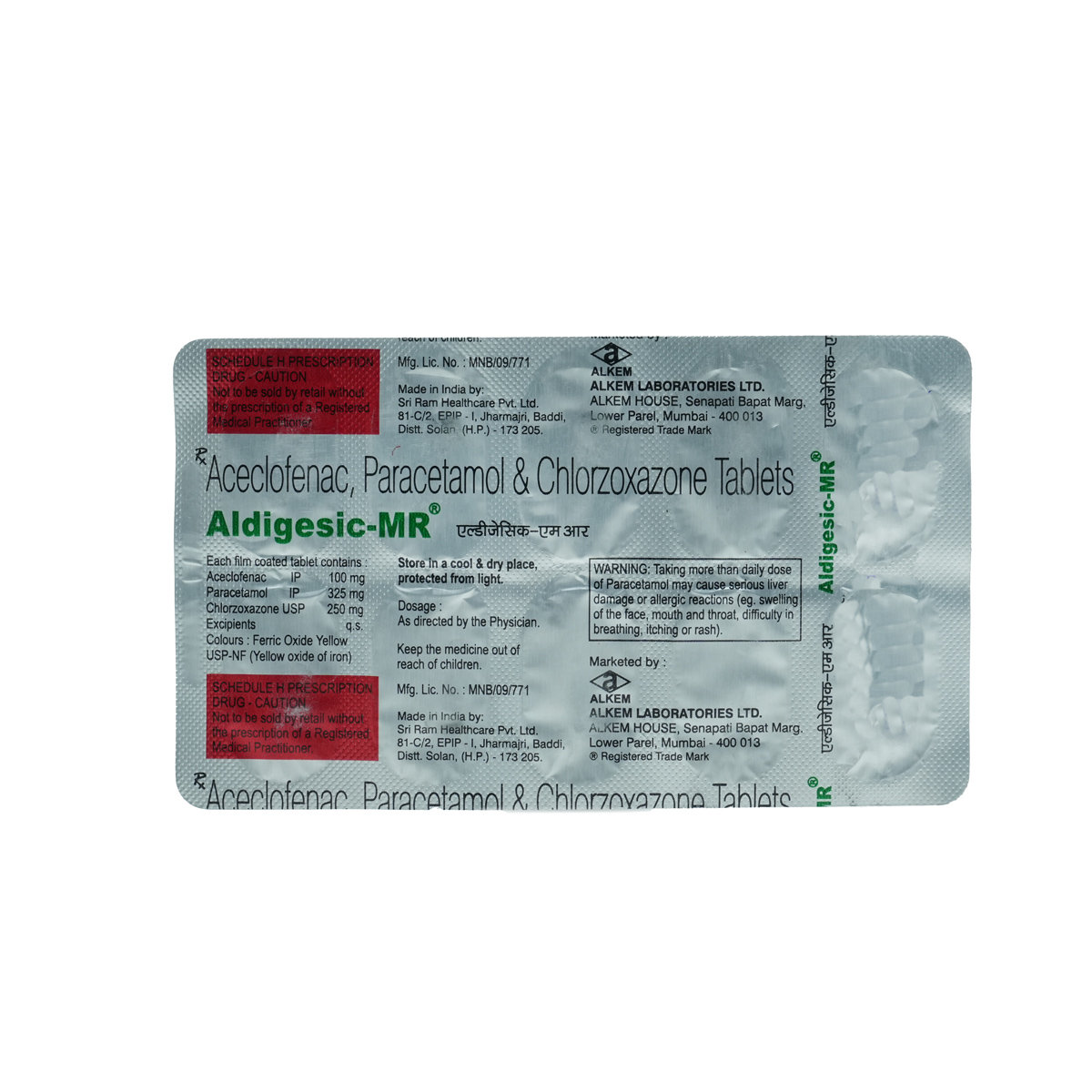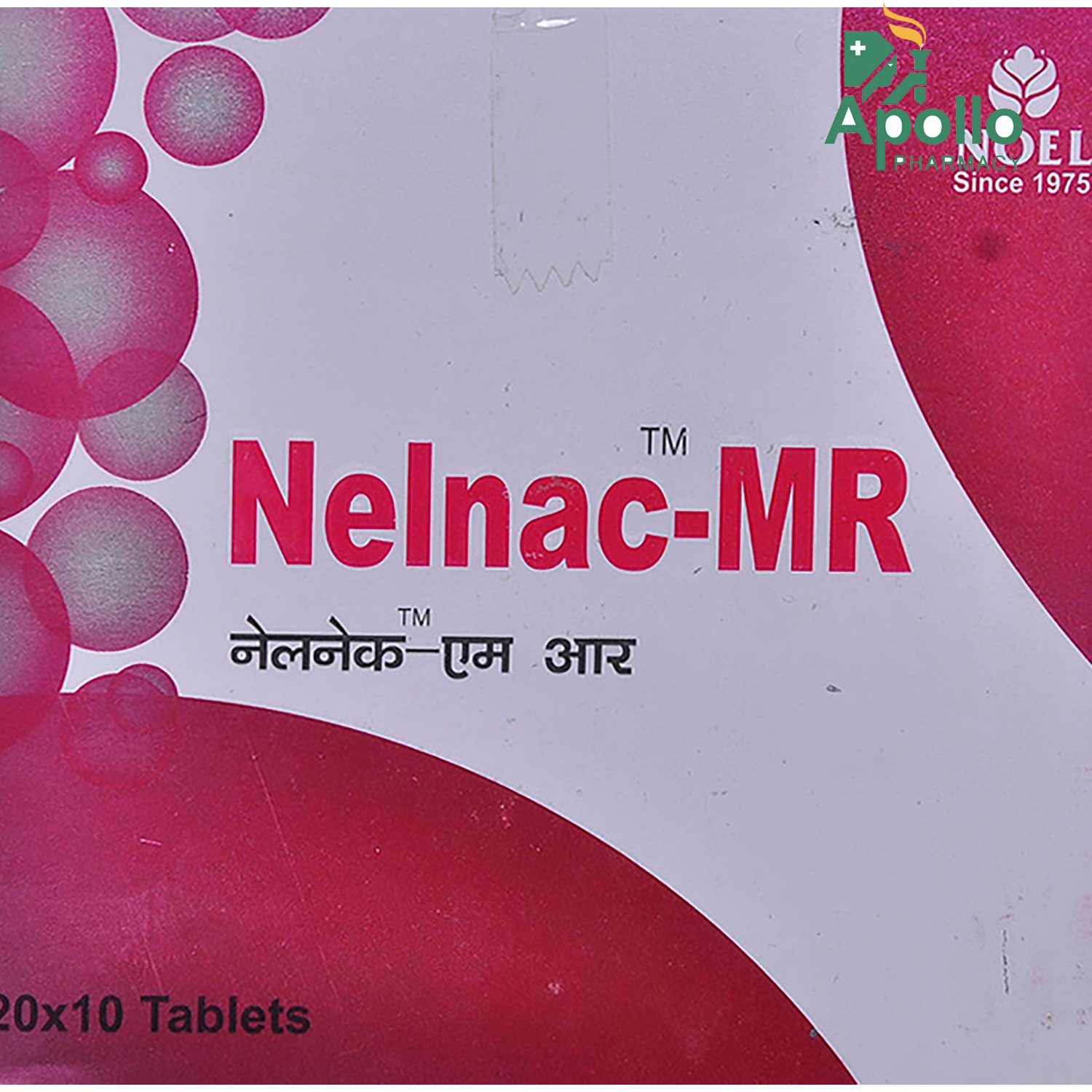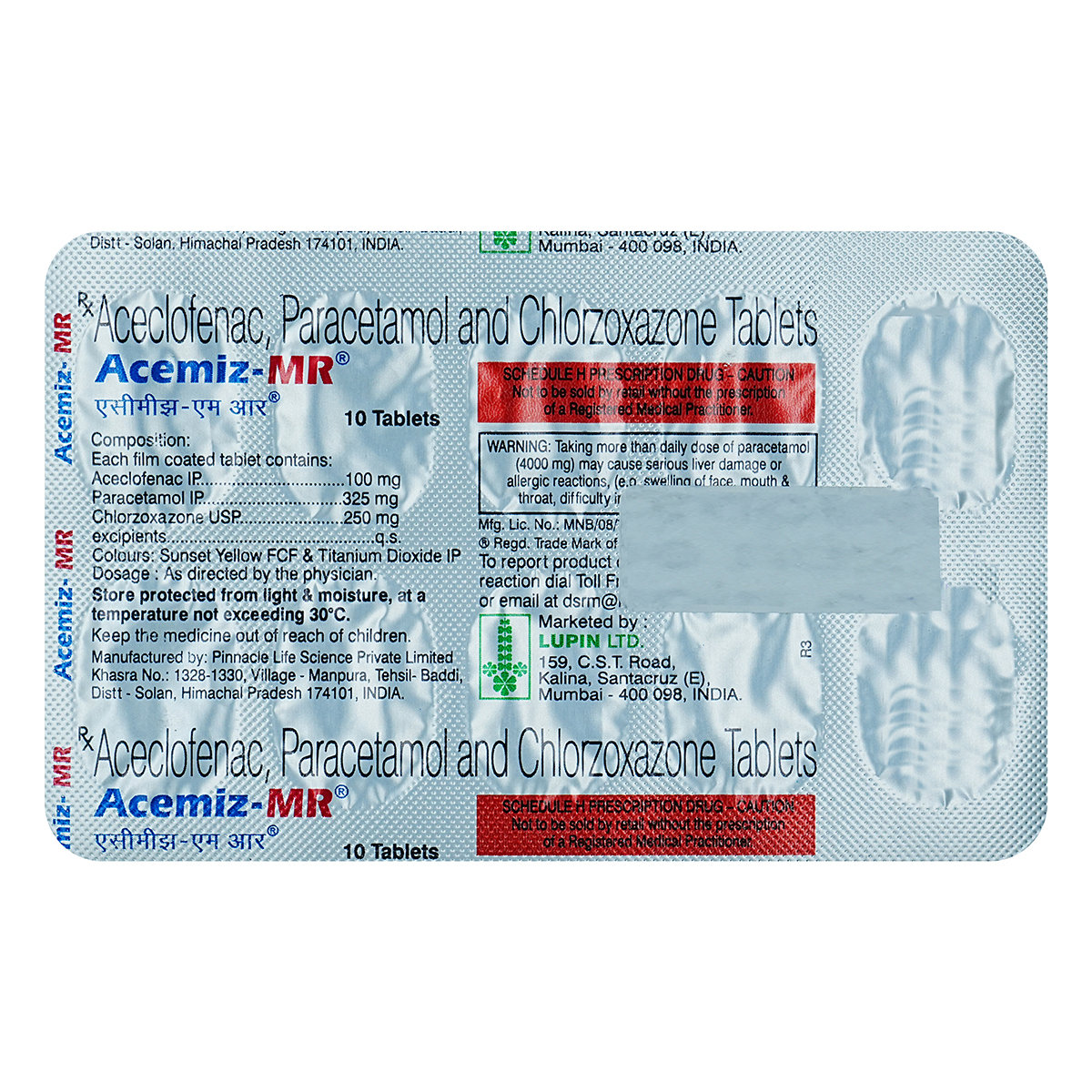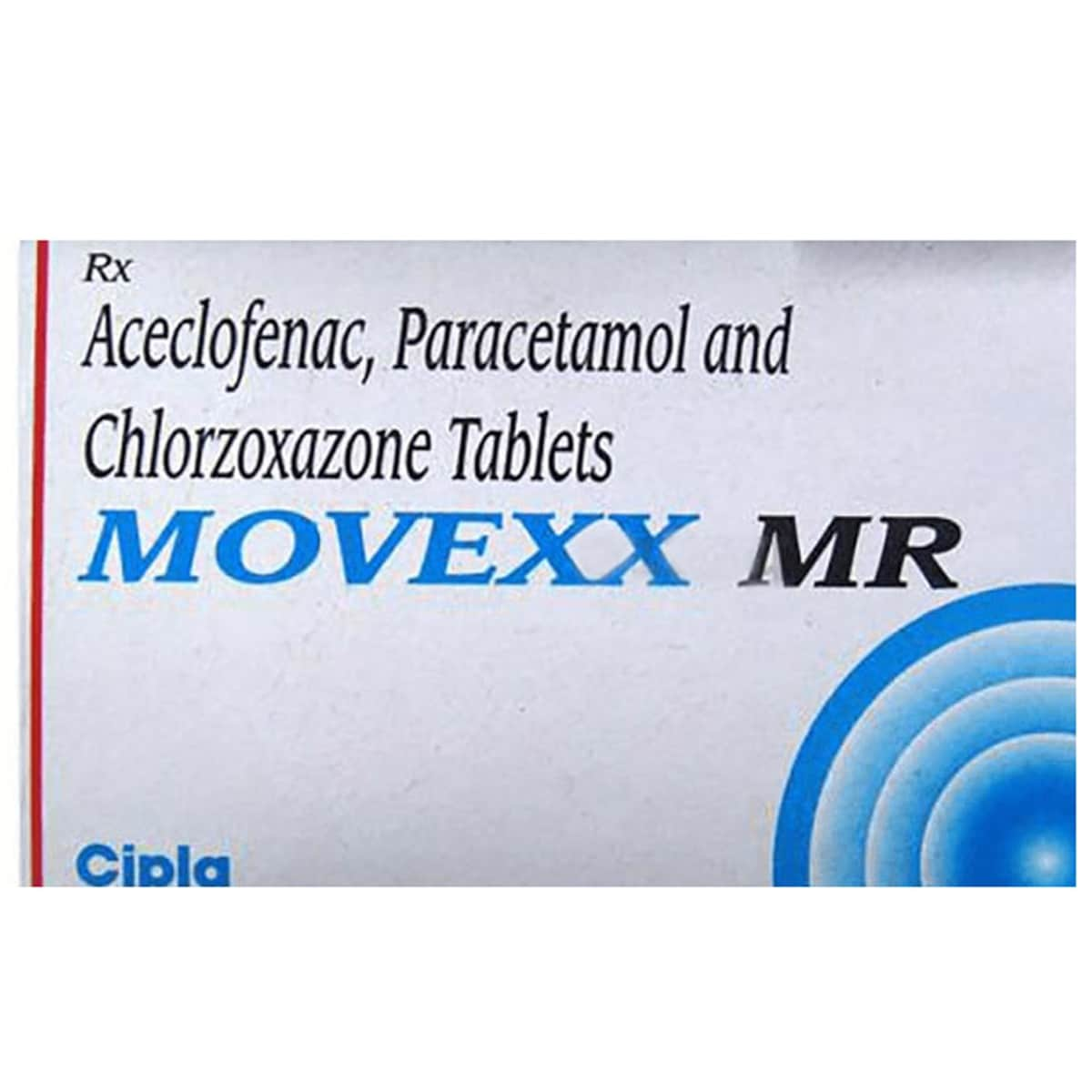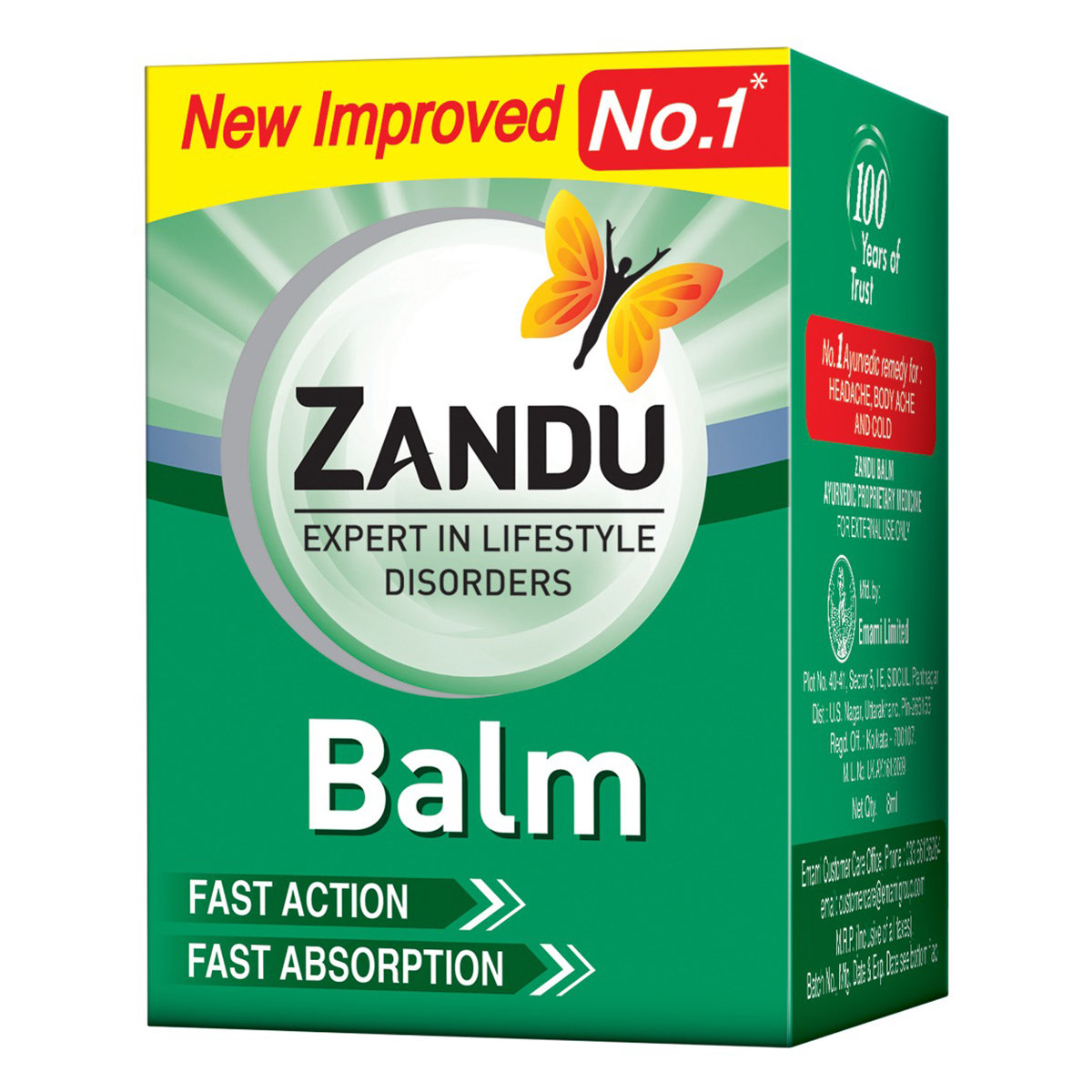Dolokind-MR Tablet
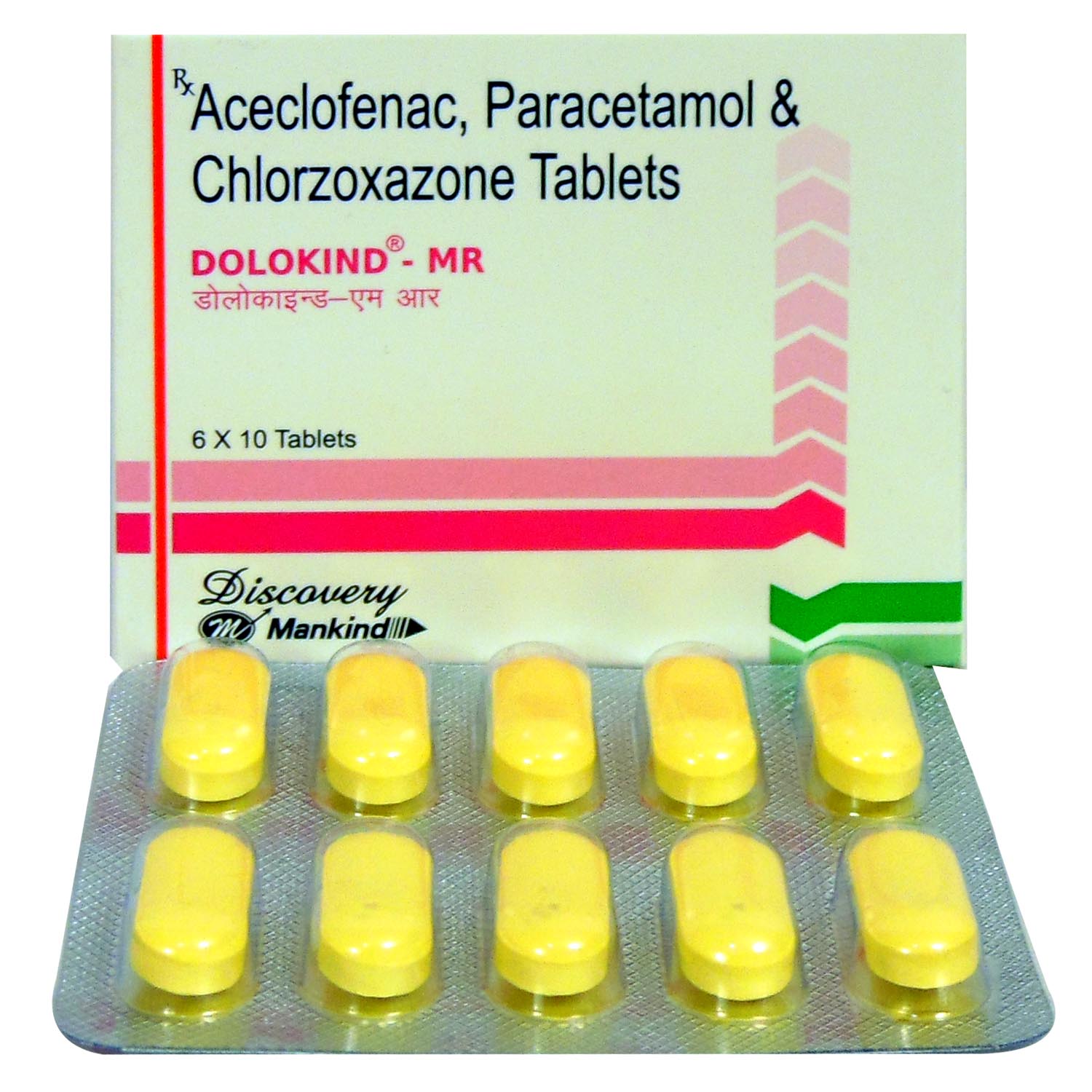
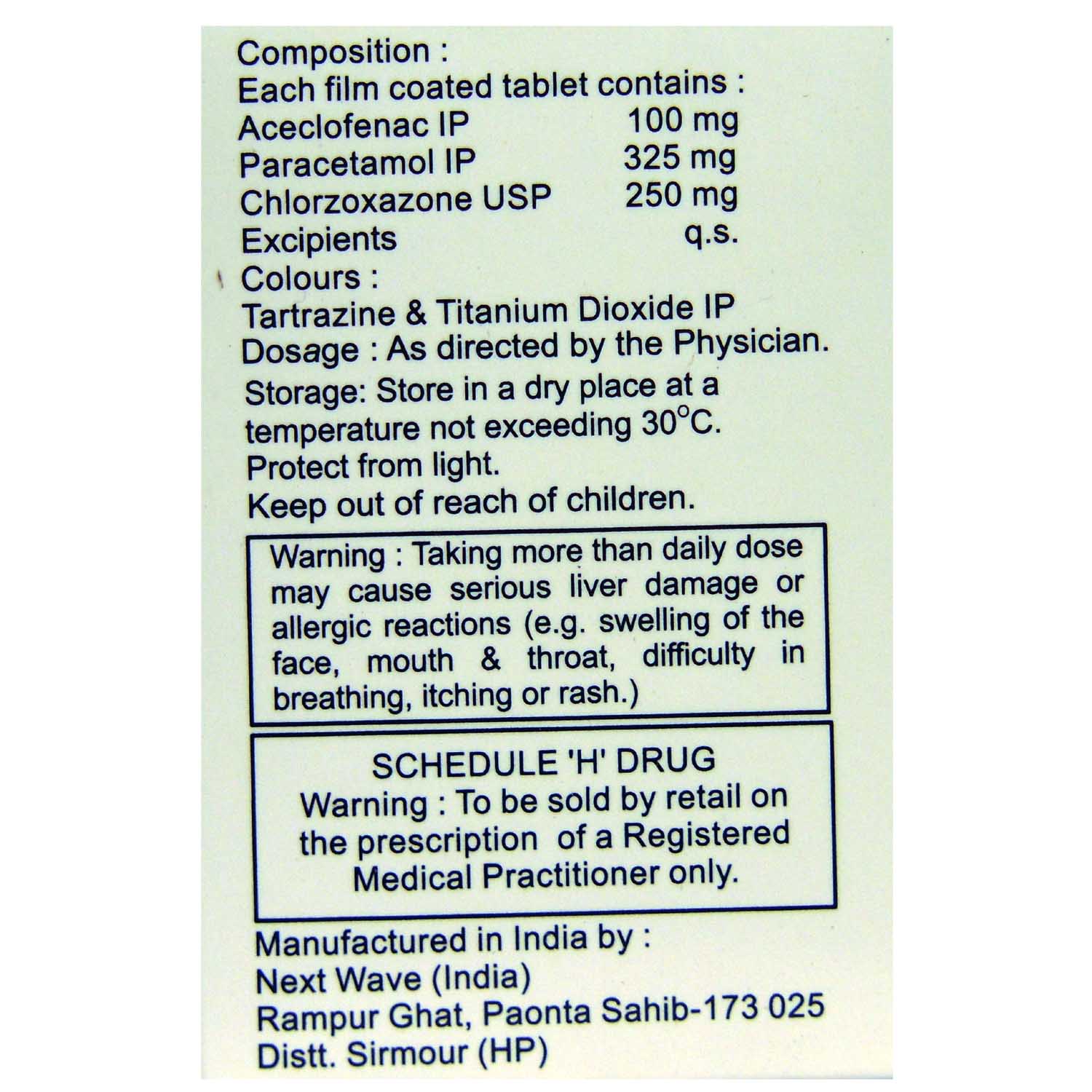
MRP ₹85
(Inclusive of all Taxes)
₹12.8 Cashback (15%)
know your delivery time
Provide Delivery Location
Manufacturer/Marketer :
Consume Type :
Expires on or after :
Return Policy :

Secure Payment

Trusted by 8 Crore Indians

Genuine Products
Therapeutic Class
Country of origin
Manufacturer/Marketer address
Disclaimer
Alcohol
Safe if prescribed
Dolokind-MR Tablet with alcohol can cause liver problems, so should not be taken until prescribed if you are taking alcohol.
Pregnancy
Consult your doctor
Only consume Dolokind-MR Tablet , if you are prescribed by a doctor.
Breast Feeding
Consult your doctor
Only consume Dolokind-MR Tablet , if you are prescribed by a doctor
Driving
Safe if prescribed
Dolokind-MR Tablet can impair the ability to drive. So, do not drive or operate heavy machinery that required mental alertness after taking Dolokind-MR Tablet .
Liver
Consult your doctor
Dolokind-MR Tablet to be taken with caution, especially if you have a history of liver diseases/conditions. Dose may have to be adjusted by your doctor.
Kidney
Consult your doctor
Dolokind-MR Tablet to be taken with caution, especially if you have a history of Kidney diseases/conditions. Dose may have to be adjusted by your doctor.
Children
Safe if prescribed
Dolokind-MR Tablet is not recommended for children below the age of 10 years. The safety and effectivenss of Dolokind-MR Tablet has not been established in children due to limited testing of this drug on children by competent authorities across the world.
Product Substitutes
About Dolokind-MR Tablet
Dolokind-MR Tablet is a combination drug that belongs to NSAIDs (non-steroidal anti-inflammatory drugs) or pain killers primarily used for pain relief and muscle relaxation. Muscle pain (myalgia) is widespread and generally refers to uncomfortable sensations in the muscles which can be due to illness, injury or excessive exercise. It can be continuous or can also occur at intervals.
Dolokind-MR Tablet contains three medicines, namely: Aceclofenac (pain killer), Paracetamol (fever reducer/mild pain reliever) and Chlorzoxazone (muscle relaxant). Aceclofenac and Paracetamol together work by blocking the effect of a natural chemical messenger called cyclo-oxygenase (COX) enzymes that make another chemical (prostaglandins). These prostaglandins are produced at sites of damage or injury and cause inflammation and pain. On the other hand, Chlorzoxazone is a muscle relaxant that works by centrally acting on the spinal cord by depressing reflexes, thereby relieving pain and stiffness caused due to muscle strains and sprains.
Dolokind-MR Tablet can be taken with or without food as advised by your doctor for the best results. Do not stop taking Dolokind-MR Tablet even if you feel better to avoid any unpleasant side effects. Common side effects of Dolokind-MR Tablet include nausea, vomiting, heartburn, stomach pain, diarrhoea, and loss of appetite. If any of these side effects get worse or do not subside, please visit your doctor immediately.
Dolokind-MR Tablet should not be taken if you have any serious medical condition, severe kidney or liver disease, are planning to become pregnant or are pregnant. Also, consumption of alcohol should be avoided while taking Dolokind-MR Tablet as it may increase the drowsiness and dizziness. So, driving a motor vehicle and operating heavy machinery should be avoided. Excess of paracetamol intake can cause liver damage so; its dose should not exceed more than 4 gm per day.
Uses of Dolokind-MR Tablet
Medicinal Benefits Mweb
Key Benefits
Aceclofenac and Paracetamol together work by blocking the effect of a natural chemical messenger called cyclo-oxygenase (COX) enzymes that make another chemical (prostaglandins). These prostaglandins are produced at sites of damage or injury and cause inflammation and pain. On the other hand, Chlorzoxazone is a muscle relaxant that works by centrally acting on the spinal cord by depressing reflexes, thereby relieving pain and stiffness caused due to muscle strains and sprains.
Directions for Use
Side Effects of Dolokind-MR Tablet
- Nausea
- Vomiting
- Heartburn
- Stomach pain
- Diarrhoea
- Loss of appetite
- Tiredness
- Sleepiness
Drug Warnings
Dolokind-MR Tablet should not be taken if you have any serious medical condition, severe kidney or liver disease, are planning to become pregnant or are pregnant. Also, consumption of alcohol should be avoided while taking Dolokind-MR Tablet as it may increase the drowsiness and dizziness. So, driving a motor vehicle and operating heavy machinery should be avoided. Excess of paracetamol intake can cause liver damage so; its dose should not exceed more than 4 gm per day.
Drug-Drug Interactions
Drug-Drug Interactions
Login/Sign Up
Co-administration of Atenolol with Dolokind-MR Tablet could increase the risk of low blood pressure.
How to manage the interaction:
Although there is a possible interaction between Atenolol and Dolokind-MR Tablet, you can take these medicines together if prescribed by a doctor. Consult a doctor if you experience excessive sweating, shortness of breath, palpitations, or chest discomfort. Do not discontinue any medications without consulting a doctor.
Using Morphine together with Dolokind-MR Tablet can cause central nervous system depression (a physiological state that can result in a decreased rate of breathing, decreased heart rate, and loss of consciousness).
How to manage the interaction:
Co-administration of Morphine with Dolokind-MR Tablet can result in an interaction, but it can be taken if a doctor has advised it. However, if you experience any symptoms like trouble breathing, feeling tired, or having a cough, dizziness, drowsiness, difficulty concentrating, impaired judgment, reaction speed, and motor coordination, make sure to contact a doctor immediately. Do not stop using any medications without consulting a doctor.
Taking Tapentadol with Dolokind-MR Tablet can increase the risk or severity of side effects like decreased breathing rate, irregular heart rhythms, or problems with movement and memory.
How to manage the interaction:
Taking Dolokind-MR Tablet with Tapentadol can result in an interaction, it can be taken if your doctor has advised it. Contact a doctor immediately if you experience signs such as drowsiness, lightheadedness, palpitations, confusion, severe weakness, or difficulty breathing. Do not discontinue any medications without consulting a doctor.
Co-administration of Dolokind-MR Tablet may decrease the excretion rate of Oxazepam which could result in a higher serum level.
How to manage the interaction:
Although there is a possible interaction between Oxazepam and Dolokind-MR Tablet, you can take these medicines together if prescribed by a doctor. Do not stop using any medications without a doctor's advice.
Co-administration of ketamine and Dolokind-MR Tablet may decrease the effectiveness of Ketamine which could result in a higher blood level.
How to manage the interaction:
Although taking Ketamine and Dolokind-MR Tablet together can evidently cause an interaction, it can be taken if a doctor has suggested it. If you're feeling very sleepy or having trouble breathing, it's important to contact your doctor right away. Do not stop using any medications without a doctor's advice.
Co-administration of Teriflunomide with Dolokind-MR Tablet may increase the risk or severity of Liver problems.
How to manage the interaction:
Taking Dolokind-MR Tablet with Teriflunomide together can possibly result in an interaction, but it can be taken if a doctor has advised it. Do not discontinue any medications without consulting a doctor.
Co-administration of Dolokind-MR Tablet and Ketoconazole may increase the risk of liver injury.
How to manage the interaction:
Although there is a possible interaction between Dolokind-MR Tablet and Ketoconazole, you can take these medicines together if prescribed by a doctor. However, if you have joint pain or swelling, fever, chills, unusual bleeding or bruising, skin rash, itching, over-tiredness, nausea, vomiting, loss of appetite, stomach pain, dark-colored urine, light-colored stools, and/or yellowing of the skin or eyes, contact a doctor immediately as these may be signs and symptoms of liver damage. Do not discontinue the medication without consulting a doctor.
Co-administration of Dolokind-MR Tablet and Leflunomide may increase the risk of liver problems.
How to manage the interaction:
Although there is a possible interaction between Dolokind-MR Tablet and Leflunomide, they can be taken together if prescribed by a doctor. However, if you experience fever, chills, joint pain or swelling, unusual bleeding or bruising, skin rash, itching, less desire to eat, fatigue, nausea, vomiting, abdominal pain, or yellowing of the skin or eyes, contact a doctor immediately. Do not discontinue any medications without consulting a doctor.
Co-administration of Dolokind-MR Tablet and Valdecoxib may increase the risk or severity of adverse effects.
How to manage the interaction:
Although there is a possible interaction between Dolokind-MR Tablet and Valdecoxib, you can take these medicines together if prescribed by a doctor. However, if the side effects worsen, please consult a doctor.
Co-administration of Lomitapide and Dolokind-MR Tablet may increase the risk of severity of liver injury.
How to manage the interaction:
Although there is a possible interaction between Dolokind-MR Tablet and Lomitapide, you can take these medicines together if prescribed by a doctor. Do not stop using any medications without a doctor's advice.
Drug-Food Interactions
Drug-Food Interactions
Login/Sign Up
Drug-Diseases Interactions
Drug-Diseases Interactions
Login/Sign Up
Drug-Drug Interactions Checker List
- ALPRAZOLAM
- ESCITALOPRAM
- ZOLPIDEM
- TRAMADOL
- OXYCODONE
- GABAPENTIN
- TOPIRAMATE
- PREGABALIN
- FLUOXETINE
- DULOXETINE
- DIPHENHYDRAMINE
- CETIRIZINE
- BACLOFEN
Habit Forming
Diet & Lifestyle Advise
- Try to increase the consumption of calcium and vitamin D, as recommended as part of a healthy bone diet.
- Omega 3 fatty acid oils enriched food should include in your daily meal for keeping joints healthy.
- Connective tissues are the “cellular glue” that connects and support vital organs in the body. This connective tissue is comprised of proteins like collagen and elastin. So the requirement of proteins are required for keeping your muscle healthy, so intake of high protein diets like fish (salmon, sardines, and tuna), chicken, and eggs for non-vegetarian. While legumes, nuts, seed and dairy items (milk, yoghurt, cheese) for a vegetarian person is recommended.
- Magnesium, Vitamin K and Zinc enriched foods can help in keeping your bones and muscle healthy so its intake should be enhanced in your daily diet plan.
- Physical activities like Tai chi, Yoga, swimming and walking have shown improvement in managing muscle pain.
- Do not sit for a longer duration. Try to take a gap of 10 minutes by brisk walking or stretching.
All Substitutes & Brand Comparisons
RX
Acimol-MR Tablet 10's
Leeford Healthcare Ltd
₹60.5
(₹5.45 per unit)
28% CHEAPERRX
Flexilace-MR Tablet 10's
Solace Pharmaceuticals
₹84
(₹7.56 per unit)
1% CHEAPERRX
Acefenac MR Tablet 10's
Medichem Pharmaceuticals India Pvt Ltd
₹84
(₹7.56 per unit)
1% CHEAPER

Have a query?
Buy best C.n.s Drugs products by
Intas Pharmaceuticals Ltd
Sun Pharmaceutical Industries Ltd
Torrent Pharmaceuticals Ltd
Alkem Laboratories Ltd
Abbott India Ltd
Cipla Ltd
Alteus Biogenics Pvt Ltd
Micro Labs Ltd
Lupin Ltd
Ipca Laboratories Ltd
D D Pharmaceuticals Pvt Ltd
Icon Life Sciences
Mankind Pharma Pvt Ltd
Tripada Healthcare Pvt Ltd
Arinna Lifesciences Ltd
Linux Laboratories Pvt Ltd
East West Pharma India Pvt Ltd
La Renon Healthcare Pvt Ltd
Talent India Pvt Ltd
Tas Med India Pvt Ltd
Zydus Healthcare Ltd
Cnx Health Care Pvt Ltd
Eris Life Sciences Ltd
Leeford Healthcare Ltd
Emcure Pharmaceuticals Ltd
Macleods Pharmaceuticals Ltd
Sigmund Promedica
Aristo Pharmaceuticals Pvt Ltd
Dr Reddy's Laboratories Ltd
Troikaa Pharmaceuticals Ltd
Consern Pharma Ltd
Zydus Cadila
Shine Pharmaceuticals Ltd
Wockhardt Ltd
Ardent Life Sciences Pvt Ltd
Crescent Formulations Pvt Ltd
Theo Pharma Pvt Ltd
Reliance Formulation Pvt Ltd
Ikon Pharmaceuticals Pvt Ltd
Propel Healthcare
Neon Laboratories Ltd
Jagsam Pharma
Msn Laboratories Pvt Ltd
Morepen Laboratories Ltd
Pulse Pharmaceuticals
Sanofi India Ltd
Med Manor Organics Pvt Ltd
Hetero Healthcare Pvt Ltd
Novartis India Ltd
Crescent Therapeutics Ltd
Elder Pharmaceuticals Ltd
Solvate Laboratories Pvt Ltd
Akumentis Healthcare Ltd
Mova Pharmaceutical Pvt Ltd
Psyco Remedies Ltd
Tripada Lifecare Pvt Ltd
Ajanta Pharma Ltd
Cyrus Remedies Pvt Ltd
Medishri Healthcare Pvt Ltd
Cadila Healthcare Ltd
Glenmark Pharmaceuticals Ltd
Matteo Health Care Pvt Ltd
Hbc Life Sciences Pvt Ltd
Lyf Healthcare
Matias Healthcare Pvt Ltd
Mesmer Pharmaceuticals
Alembic Pharmaceuticals Ltd
Capital Pharma
Crescent Pharmaceuticals
Medopharm Pvt Ltd
Alniche Life Sciences Pvt Ltd
Kivi Labs Ltd
Talin Remedies Pvt Ltd
USV Pvt Ltd
Quince Lifesciences Pvt Ltd
Solis Pharmaceuticals
Infivis Life Care
Zuventus Healthcare Ltd
Cadila Pharmaceuticals Ltd
Pfizer Ltd
Wallace Pharmaceuticals Pvt Ltd
A N Pharmacia Laboratories Pvt Ltd
Blue Cross Laboratories Pvt Ltd
Jenburkt Pharmaceuticals Ltd
Lia Life Sciences Pvt Ltd
Mano Pharma
Medley Pharmaceuticals Ltd
Primus Remedies Pvt Ltd
FDC Ltd
Maneesh Pharmaceuticals Ltd
Apex Laboratories Pvt Ltd
Gagnant Healthcare Pvt Ltd
Ozone Pharmaceuticals Ltd
RPG Life Sciences Ltd
Strides Shasun Ltd
Unichem International
GlaxoSmithKline Pharmaceuticals Ltd
Kuresys Labs Pvt Ltd
LA Pharma
Trion Pharma India Llp
Customers Also Bought


